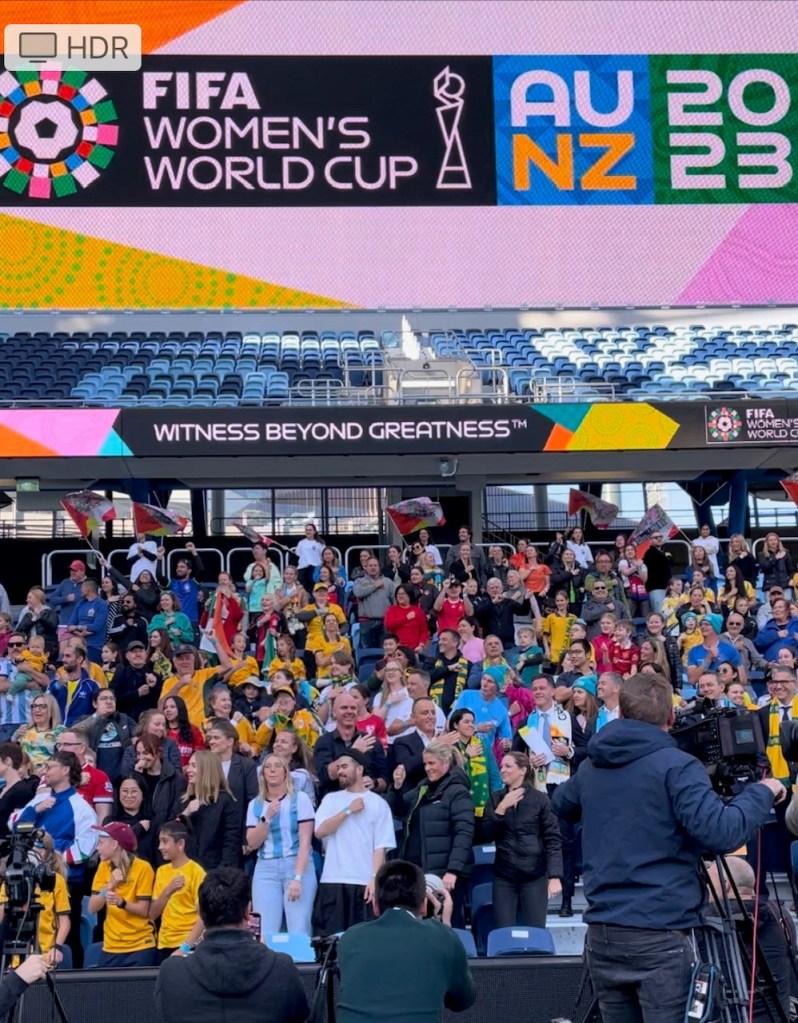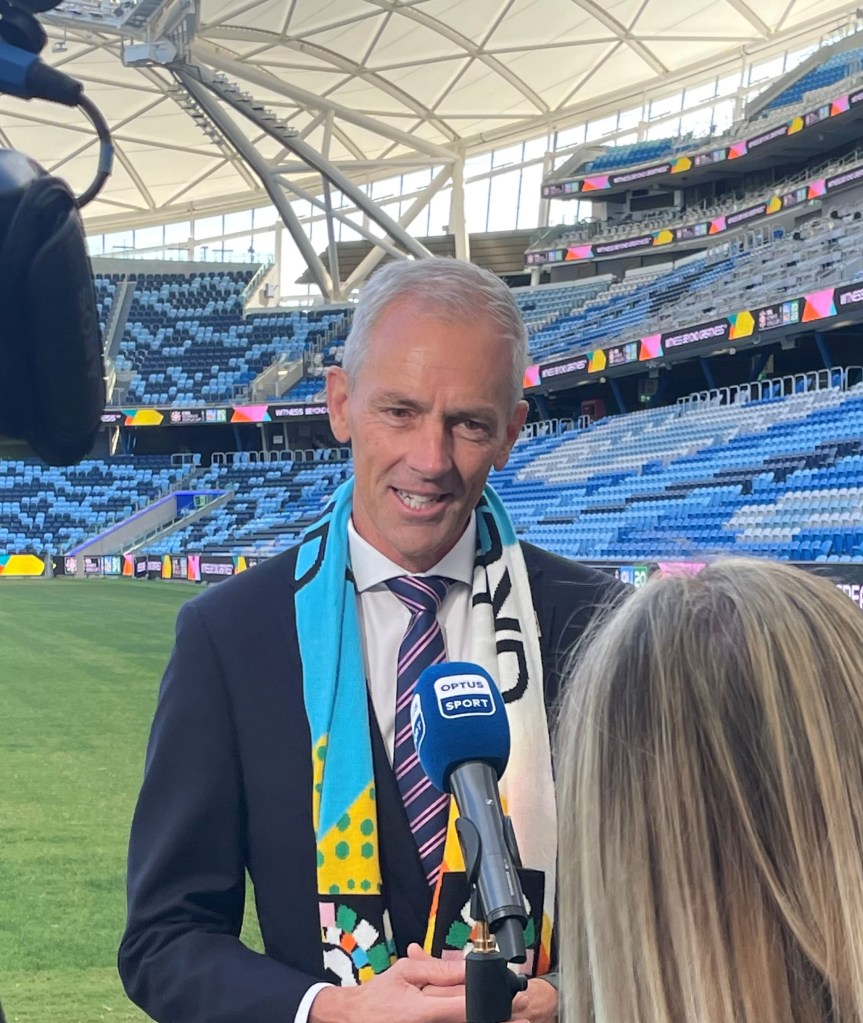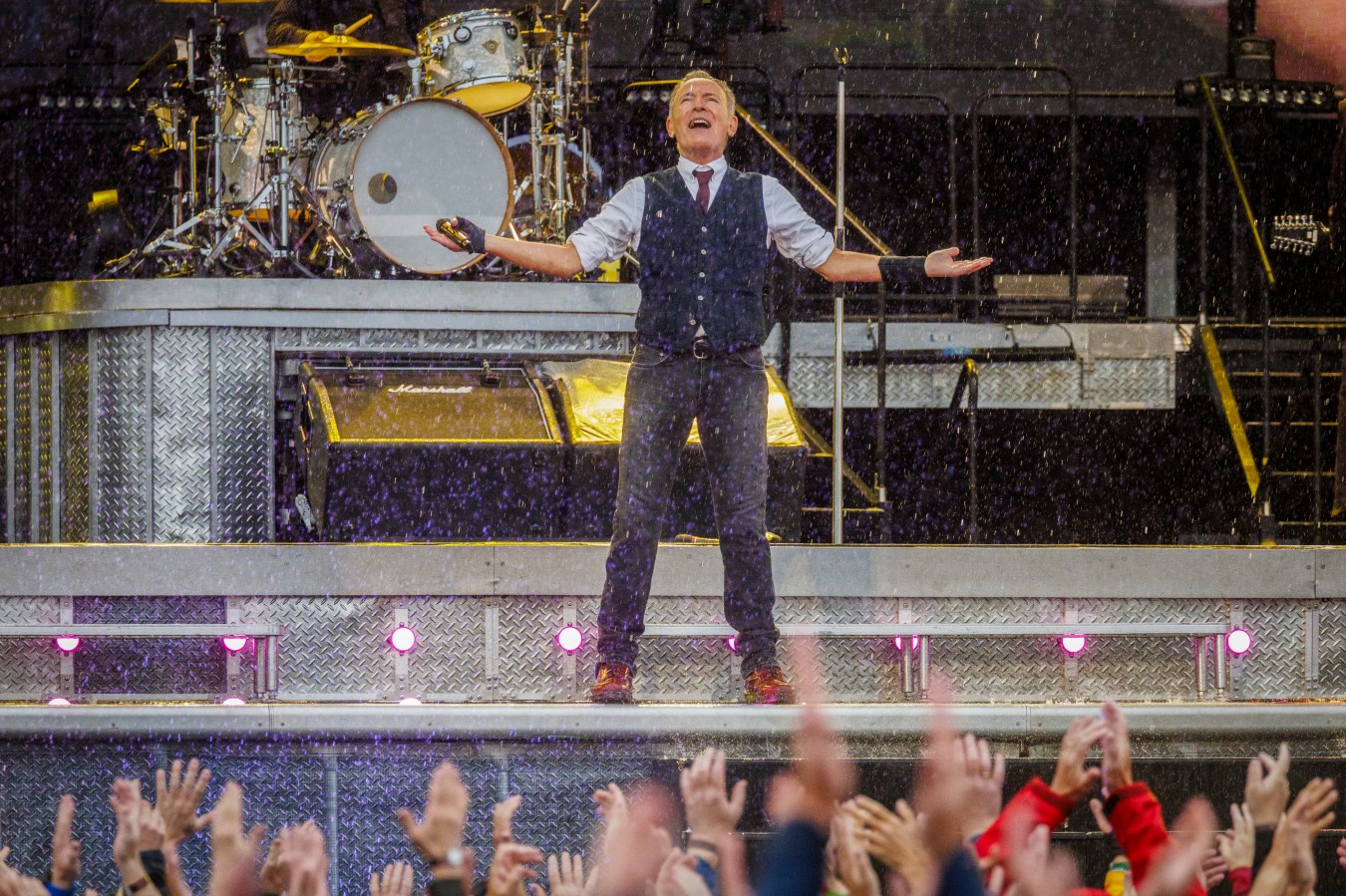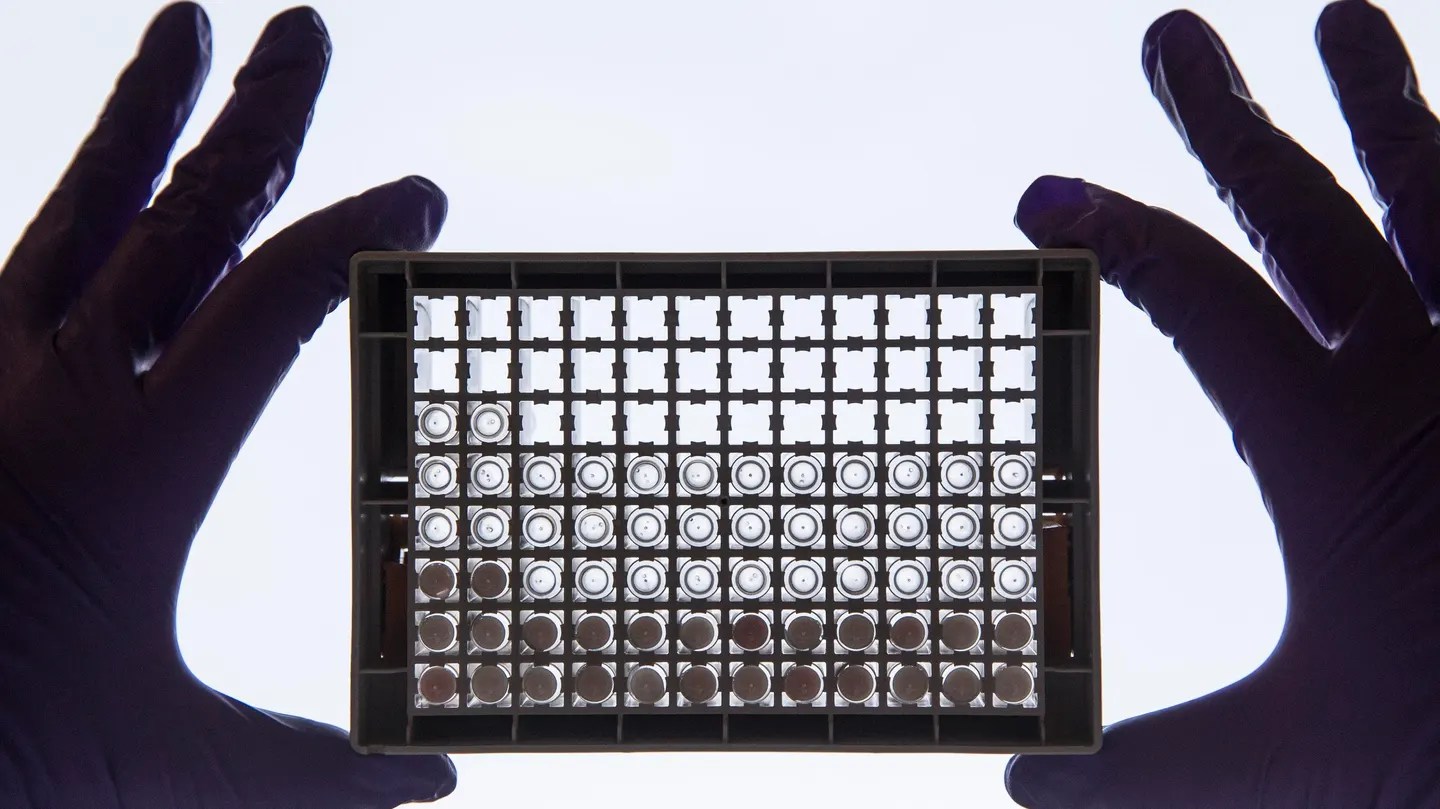The Women’s Football World Cup, kicking off in Australia and New Zealand in July, is challenging the Winter Olympics to be the third most watched sporting event in the world.

FIFA Women’s World Cup 2023 CEO David Beeche forecast 2 billion viewers would watch the tournament – a 90 per cent increase in eyeballs on the matches through television and digital compared to the 2019 tournament.
He predicted a 25% per cent increase in bums on seats, from 1.2 million to 1.5 million, compared to four years ago in France where there were fewer games.
With 100 days to go to the kickoff on July 20, FIFA released most of its remaining 800,000 tickets yesterday. FIFA had already sold out its initial tranche of 650,000 and expected most of the key matches to have sold out within hours of yesterday’s release, with an ultimate target of 1.4 million tickets sold (plus an additional 100,000 given away).
Adult ticket prices range from $120 to $20, half that for children under 16.
Beeche said the average ticket price would work out at about $50, giving FIFA an estimated total of $70 million in ticket sales.
“The whole strategy behind that was to make it as affordable as possible. We didn’t want price to be a barrier to filling the stadiums,” Beeche said.

“We’re forecasting around 50,000 international visitors on the Australian side. On the New Zealand side around 30,000. The exact economic impact on that has just been refreshed.”
The tournament has a budget of $435 million. The sums are large, but FIFA recently announced it was budgeting to receive US$11 billion in income over the next four years up to the next men’s world cup – an increase of $4.5 billion over the previous four-year period.
After the controversies that plagued the men’s tournament in Qatar last year, 550 million people tuned in to watch the first game of the tournament between Qatar and Equador, and 1.5 billion watched the final between France and Argentina.
FIFA claimed that five billion people engaged with the tournament “across an array of platforms and devices across the media universe”.
The Tokyo Summer Olympics in 2021 claimed a viewing audience of 3.05 billion viewers, who partook in 28 billion video views. Beijing’s 2022 Winter Olympics claimed an audience of 2 billion.
The International Cricket Council claimed a television viewing audience of 1.28 billion viewers for last year’s Men’s T20 World Cup 2022, but that it had 6.58 billion video views across all its platforms, making it the most digitally engaged cricket event ever.
FIFA pivoted to a new organisational model for this World Cup, using a local, FIFA-owned subsidiary on the ground to run it, with Beeche as CEO. He comes from a background of organising large triathlon events and was the CEO of the local organising committee for the FIFA Under-20 World Cup New Zealand 2015.
Australia and New Zealand won the bid in 2020 and Beeche was appointed in May 2021. He said 60-to-80-hour working weeks have been standard for him.
“It’s going ahead whether we’re ready or not, so we’d better be ready.”
David Beeche, CEO FIFA Women’s World Cup 2023
He has 300 fulltime staff now, but 1500 will come in at tournament time to handle the huge array of jobs from bus parking attendants to airport meeters and greeters, alongside 2000 volunteers.
The matches will be played across six stadiums in the five Australian mainland state capitals and four cities in New Zealand. Sixteen of the 32 teams will be based in Australia during the group stage, and all have their own dedicated training grounds.
Beeche said the benefits to the host countries would be more than economic.
“It’s all the legacy outcomes,” he said. “It’s the growth in participation. It’s the catalyst for a whole lot of development work. This new stadium in Sydney was already planned, but the tournament was used to make sure it was rebuilt in a timely manner.
“Three other stadiums in Australia have gone through significant upgrades. There are dozens of training sites that are getting lighting upgrades, pitch upgrades, changing room upgrades. There’s all that infrastructure side that will leave a positive legacy for the clubs and players who will play on them.”
He said the spread of knowledge was an often-overlooked part of the benefits. “For example, there’s a whole pitch management exercise around this tournament to make sure the pitches are absolutely first class. FIFA have a world leading in-house expert in this area. He’s been out here training local pitch experts so they can have a legacy from the pitch work – the work that goes into making sure the pitches are in top condition in terms of the artificial stitching that goes in as new pitches get rolled in. All those suppliers benefit from the investment but also the IP around how to deliver a world-class pitch.
“Another example is that in Australia pitches are typically mown with ride-on mowers, but their wheels leave very slight indents on the pitches, even though they’re soft rubber. FIFA have invested in a whole lot of special high-tech pedestrian mowers to ensure that surface is as perfect as possible. So that’s another little legacy.”


